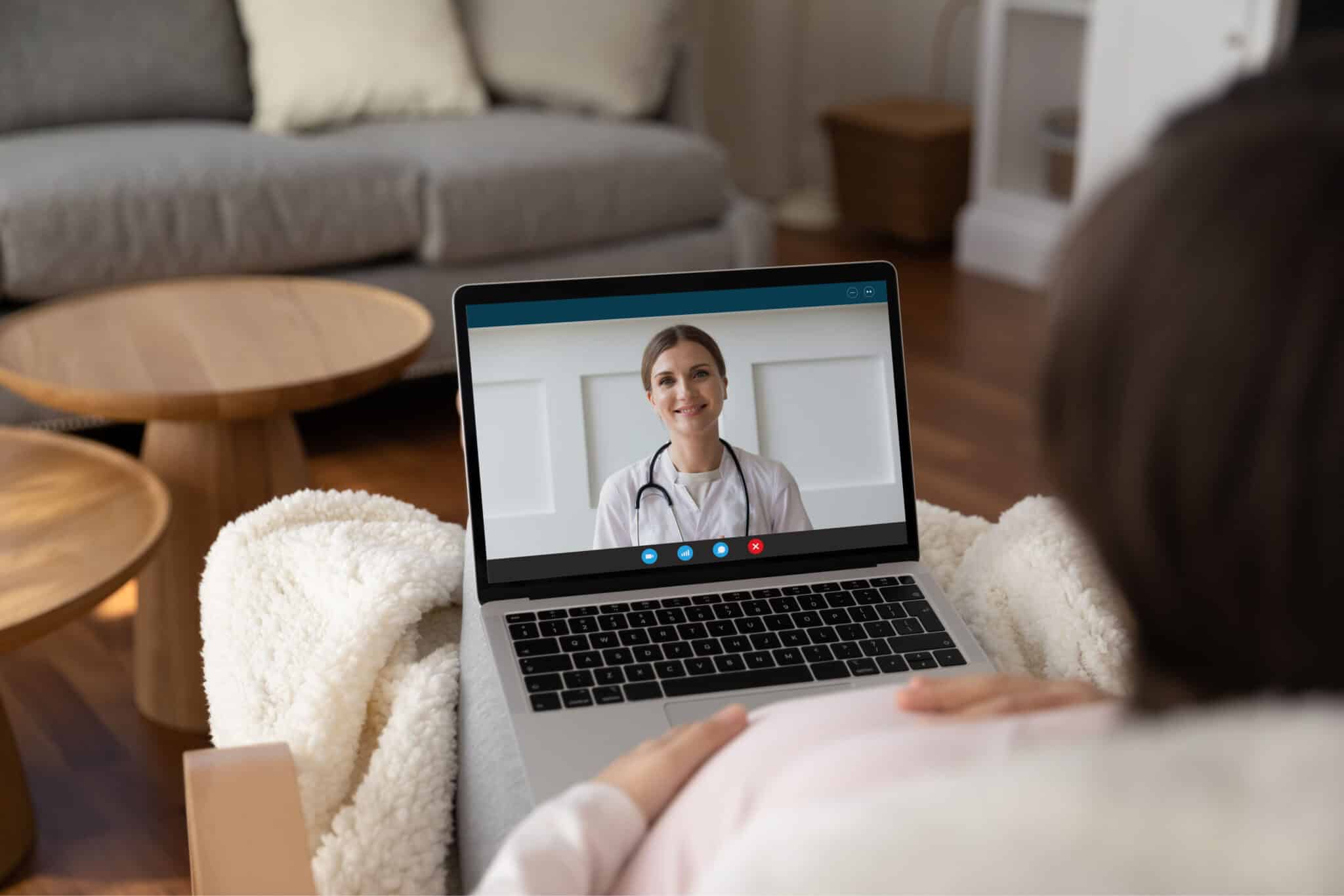What to expect your first telehealth session
Written By: Farrah Coppolino

Telehealth services are widely used in healthcare and have allowed patients to connect to providers with ease. Like other forms of healthcare, applied behavior analysis (ABA) services can be provided via telehealth. ABA focuses on improving socially significant behaviors (i.e., anything important) to a meaningful degree and relies on assessment, individualized instruction, and structured teaching programs in order to measure behavior change. As the only evidence-based treatment for people diagnosed with autism spectrum disorder (ASD), ABA services can be a life changing step for so many families with children with ASD. Unfortunately, there are obstacles in life that interfere with a child’s ability to access these services, including geographic location, funding regulations, and the most recent (and ongoing) example of such obstacles being the COVID-19 pandemic. These barriers to treatment often result in a necessary push towards telehealth services.
When the pandemic was in its early days, many children receiving ABA services were suddenly cut off from the services helping them to acquire practical and critical skills needed to promote and further their independence. Many children were also denied access to in-person schooling and other therapeutic services such as speech therapy and occupational therapy. The world suddenly became “virtual,” but the need for people to access their therapy services remained critical. Because ABA is medically necessary for some people with ASD, insurances began temporarily covering telehealth support for applied behavior analysis (ABA) parent or caregiver guidance services. This is to help support families during social distancing and the COVID-19 response. Now that restrictions are easing up, some insurances are doing away with telehealth or are authorizing partial telehealth coverage. When using telehealth, it’s important to note that this approach doesn’t replace the behavior interventionists who provide the hands-on care during in-home ABA sessions or the in-home supervision visits by the BCBA. Instead, telehealth is a way to continue ABA services during a time when in-person services are impossible or is a way for the BCBA to provide additional supervision and training to supplement the time they spend providing in-home supervision.
The value of using telehealth has been proven time and again since as early as 2008, not only for teaching children with autism using ABA, but also for training practitioners on the correct ABA strategies to use with such children. A study from 2021 demonstrated how effective telehealth can be when teaching functional living skills (washing hands, getting dressed, etc.) to children with ASD (Craig et. al. 2021). Another 2021 study showed that after a switch to telehealth sessions brought on by Covid-19, targeted skills continued to be maintained or improved within the telehealth sessions for all participants – children with autism (Pollard et. al. 2021). These are just two of the many studies conveying the positive effects telehealth can have on children in need of ABA services. Taking this step can be so beyond beneficial to any child and their family who may not have access to in-person services.
Beginning ABA services through telehealth in going to be a big change for any child and family familiar with or new to ABA. There are certain things to keep in mind for that first session to go as smoothly and efficiently as possible. The first being that, in most cases, one caregiver will need to remain with the child throughout all sessions, helping with prompts and guidance (providing hand over hand assistance, gestures, etc.) as well as delivering preferred items and activities. In few cases, a child may be very independent and not need as much assistance – here, it would only be necessary for a parent or caregiver to be in the background, ready to take part if needed. It is important to note that, in most cases, the therapist will be the speaker and the caregivers will assist in the hands-on implementation of programs.
The telehealth session will begin at the time predetermined by the caregiver and therapist and will take place over zoom or another HIPAA-compliant video chat platform. Generally, sessions will begin with the learner at a table with their parent or caregiver and the screen visible so that the child and therapist can see each other clearly. Any materials needed (token board, crafts, picture cards, etc.) should be communicated to the caregiver prior to session and should be kept close by for when they are needed. Depending on the child’s goals as well as the activities planned, a telehealth session may take place mainly at a table or in different parts of the home.
If sessions will be conducted at a table, it is important for a caregiver to choose a location within their home that will be best suited for their kiddo to participate in their telehealth session. This might be a table in a room where there are limited distractions around so that they can easily focus on the therapist as well as their caregiver’s directions. While distractions should be limited, items, games, and/or food that will serve as reinforcers should be kept nearby so that when earned, they can be delivered as quickly as possible to the child.
In addition, because the therapist/BCBA are unable to be in the home for a given reason, it may be necessary for a caregiver to gather or create the materials needed for the child’s virtual ABA session. This is something that will be discussed ahead of time with the therapist/BCBA and caregiver to make sure everything is ready. Materials may take the form of token boards, picture cards, games, or other materials created by the BCBA. Materials may also include links to websites, virtual games, or other electronic materials that may aid in reaching certain goals for a child. Depending on the child’s current skill acquisition goals, creating materials could be an activity that they partake in prior to session, participating in preparation.
The most important thing for a parent or caregiver to remember when helping to facilitate an ABA telehealth session for their child is to be an engaged, active participant, and to ask questions if anything is unclear! Telehealth can be a huge learning curve and is bound to face some hiccups along the way. Ensuring that all parties have an open line of communication will help ensure that virtual sessions are effective, and the client is making meaningful progress toward their goals!
References
Craig, E., Dounavi, K., & Ferguson, J. (2021). Telehealth to train interventionists teaching functional living skills to children with autism spectrum disorder. Journal of Applied Behavior Analysis, 54(2), 511–529. https://doi.org/10.1002/jaba.834
Pollard, J. S., LeBlanc, L. A., Griffin, C. A., & Baker, J. M. (2020). The effects of transition to technician‐delivered telehealth ABA treatment during the covid ‐19 crisis: A preliminary analysis. Journal of Applied Behavior Analysis, 54(1), 87–102. https://doi.org/10.1002/jaba.803
Date Posted:
January 11, 2023
Share this blog
Categories
Recent Blog Posts
-
A Day in the Life of an Early Intervention Speech Therapist
-
What Does an Early Childhood Speech Therapist Do?
-
Behavior Therapists: A Career Merging the Science of Learning with Fun and Compassion
-
A Day in the Life of a Home-Based Early Intervention Provider
-
Enhancing ABA Therapy with Compassionate Care: Empowering Individuals through Positive Reinforcement








